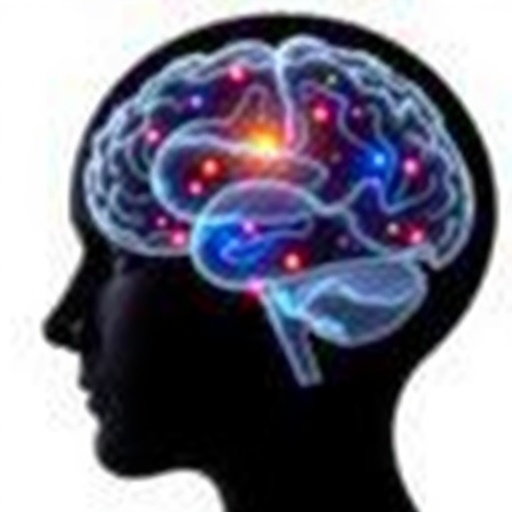Brain Stimulation Techniques Offer Hope for Neurological Disorders
In recent years, the landscape of treating neurological and psychiatric disorders has seen a promising intervention emerge: device-based non-invasive brain stimulation (NIBS) techniques. These innovative methods, which include repetitive transcranial magnetic stimulation (rTMS) and transcranial electrical stimulation (tES), have garnered considerable attention for their potential to enhance cognitive and motor functions in individuals afflicted with various neurological conditions. These disorders are often marked by disruptions in large-scale brain networks, making the promise of NIBS even more intriguing.
Despite the growing interest, the field remains fraught with challenges. Inconsistencies in protocol designs and divergent findings across studies complicate the landscape. This is particularly concerning when considering how critical these treatments could be for patients suffering from neurodegenerative diseases, brain lesions from strokes, and traumatic brain injuries. As researchers and clinicians delve deeper into NIBS, a wide array of applications continues to unfold, highlighting the adaptability and potential of these techniques.
At the heart of NIBS technologies lies their ability to modulate neural activity in specific brain areas without the need for invasive surgical procedures. Repetitive transcranial magnetic stimulation, for instance, utilizes magnetic fields to induce electrical currents in the brain. This method primarily targets specific cortical regions, aimed at either enhancing or inhibiting brain activity based on the therapeutic goals. On the other hand, transcranial electrical stimulation involves passing low electrical currents through the scalp to influence neuronal excitability. Both techniques have been deployed in numerous clinical settings, showcasing their versatility and potential for broad applications.
Yet, the current body of research reveals significant gaps that must be addressed to optimize the effectiveness of these interventions. Small sample sizes and heterogeneous patient populations often mar study findings, leading to variability in outcomes. Furthermore, a lack of standardization in stimulation protocols raises questions about reproducibility and generalizability across different settings. These challenges render it difficult for practitioners to make informed decisions regarding the implementation of NIBS in their clinical practice.
The evolving nature of NIBS techniques offers a glimpse into a future filled with possibilities. Innovations are rapidly transforming these methods from state-dependent, network-informed designs to more sophisticated approaches that utilize individualized electric field modeling. These advancements aim to provide tailored treatment protocols that reflect the unique anatomical and functional characteristics of each patient’s brain. Such an individualized approach holds significant promise for improving patient outcomes, yet it also necessitates a deeper understanding of the underlying neural mechanisms.
Robust mechanistic insights are essential for making the leap from experimental applications of NIBS to widespread clinical use. Researchers need to explore how different brain areas interact during stimulation and how these interactions influence behavioral outcomes. A thorough understanding of the brain’s connectivity and the dynamics of large-scale networks is crucial to unlock the full potential of NIBS technologies.
Another critical aspect of advancing NIBS applications involves addressing the challenges related to treatment timing, dosing, and target engagement. Tailoring stimulation sessions to coincide with optimal windows of neural plasticity may enhance the effectiveness of interventions. Understanding the pharmacological and behavioral factors that influence response to NIBS can help clinicians formulate more effective, personalized treatment plans.
In the face of these challenges, a biomarker-driven approach may enable healthcare professionals to refine patient selection and improve the precision of interventions. Identifying biomarkers that predict response to NIBS could transform the landscape of neurology by allowing for more targeted and effective treatments. The integration of neuroimaging techniques and advanced data analytics may assist in identifying such biomarkers, facilitating a more nuanced understanding of brain responses to stimulation.
As the field moves forward, collaboration across multidisciplinary teams will be essential for fostering innovation and expanding the applications of NIBS. Researchers, clinicians, and technologists must work together to bridge the gap between scientific discovery and clinical practice. By fostering an environment that encourages knowledge exchange and collaboration, the potential for new breakthroughs in NIBS will only grow.
Furthermore, as clinical evidence accumulates, patient and clinician education about the benefits and limitations of NIBS will become increasingly important. As this field evolves, it is imperative that healthcare providers are equipped with the knowledge necessary to engage patients in shared decision-making processes. Clear communication about the potential benefits, risks, and realistic outcomes associated with NIBS treatments can empower patients and enhance treatment adherence.
The journey to optimizing the applications of NIBS is akin to navigating uncharted waters. While significant progress has been made, the research landscape remains complex and dynamic. Combining rigorous scientific inquiry with clinical innovation is essential for translating research findings into meaningful patient care. As researchers and clinicians work together to clarify protocols and establish best practices, the pathway to real-life applications of NIBS for treating neurological disorders becomes more apparent.
Collectively, these efforts could culminate in a revolution in how neurological disorders are managed, paving the way for personalized treatments with heightened efficacy. As we anticipate the future, it is clear that the evolution of NIBS techniques holds the potential to transform the lives of countless individuals grappling with the challenges of neurological impairments.
The promise of NIBS is on the horizon, and with sustained effort, commitment, and scientific rigor, the vision of effective, individualized treatment strategies is within reach. The time is ripe for embracing the possibilities that lie ahead, as the integration of cutting-edge NIBS technologies into clinical practice could mark a pivotal moment in the ongoing quest to enhance brain health and ultimately improve the quality of life for countless patients worldwide.
Subject of Research: Non-invasive brain stimulation techniques in treating neurological disorders
Article Title: Brain Stimulation Techniques Offer Hope for Neurological Disorders
Article References: Rektorová, I., Pupíková, M., Fleury, L. et al. Non-invasive brain stimulation: current and future applications in neurology. Nat Rev Neurol (2025). https://doi.org/10.1038/s41582-025-01137-z
Image Credits: AI Generated
DOI:
Keywords: Non-invasive brain stimulation, repetitive transcranial magnetic stimulation, transcranial electrical stimulation, neurological disorders, personalized treatment, brain networks.




